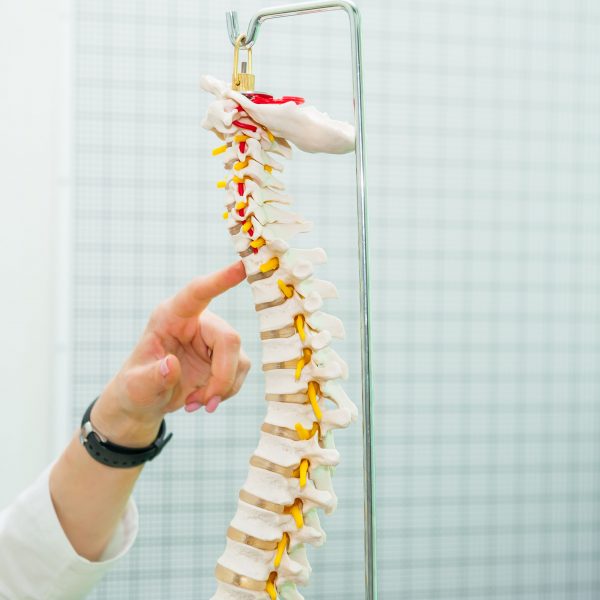Anoplasty is a procedure to reconstruct or correct the anus or any defects in the anal region in both men and women. The word anoplasty comes from two Greek words: ana meaning up and plassein which means to shape.
It can be done to treat conditions such as anorectal malformations and rectal prolapse. Anoplasty procedures involve repairing weakened muscles and tissues around the anus in order to address existing issues like protrusion, bleeding, pain, and fecal incontinence. If left untreated for too long, they can lead to serious health complications like inflammatory bowel disease or even paralysis.
Table of Contents
Why Would Someone Need Anoplasty?
Anoplasty may be implemented if a child or an adult has complications involving the anus that will cause lifelong problems with constipation or bowel control.
In most cases, anoplasty is performed on patients with fecal incontinence and anorectal malformations (birth defects where the anus and rectum aren’t properly developed.)
In adults, they may need anoplasty if they experience fecal incontinence caused by a trauma or that may have developed over time through the weakening of anal muscles due to childbirth, lack of exercise, or obesity.
Here are more cases where anoplasty may be needed as prescribed by a doctor.
Anal Fissure

An anal fissure involves ulceration or a tear in the lining of the anal canal, located right below the mucocutaneous junction.
Usually caused by local trauma, adults or children with anal fissures experience pain during defecation that persists for one to two hours. The pain is typically associated with an anal spasm or high anal pressure.
Anal Stenosis
Anal stenosis is a disabling condition where the anal canal constricts that makes it difficult to pass stool. If left untreated, this can turn into a serious complication.
Anal stenosis can affect patients of all ages, but it usually develops in adults. When anal stenosis occurs in infants, it is usually the result of physical damage to the anal canal during delivery.
Imperforate Anus
Imperforate anus is one of many diagnoses in the spectrum of Anorectal malformations (ARMs). It can range from minor defects affecting only the external anal sphincter to complete anorectal agenesis.
The etiology is multifactorial but it can be associated with several chromosomal defects, both Trisomy and de novo, as well as chromosomal microdeletion. The prevalence is about 1 in 5000 to 7000 newborns.
Anorectal Malformation
Anorectal malformation is when rectum and/or anus do not develop properly in utero. This can lead to several problems in infants, including having an un-emptiable bowel movement (encopresis), an obstructed passage causing colic, and/or pain upon defecation.
As with any disease, the underlying cause should be identified before getting any form of anoplasty surgery so that it does not recur.
How Does the Anoplasty Surgery Work?
Different cases will require different anoplasty procedures. The most important thing to consider before undergoing anoplasty is the anatomical region of the anus, which consists of two individual muscles, called sphincters. These are surrounded by circular fibers, which are part of the anal canal wall. The inner circular fibers are considered part of the anal canal wall.
If you have contracted scar tissue that has caused an outward bulge, then your surgeon will either excise or remove the scar tissue before replacing it with healthy muscle and fat. Sometimes, this is all they need to accomplish in order to treat your condition.
Other times, however, they may use the operation as a way to tighten up your anal sphincter muscles so there won’t be any subsequent problems down the road.
Anoplasty Techniques
There are two techniques used to pull up or tighten the anus: anoplasty using open surgery and anoplasty using laparoscopic surgery.
Open Surgery – The patient can be under either general or local anesthesia.
The first step is to make a small incision in the anus and cut away or detach the damaged fibers of the anal sphincter. The internal sphincter is not touched at this point because it is controlled by the autonomous nervous system, which can lead to incontinence issues after anoplasty if injured.
The second step is to detach the skin from the anus and pull it up in order to tighten the muscles surrounding this region. The final step is to attach the skin around the anus, close the wound and apply a dressing.
Open surgery anoplasty could have several drawbacks such as pain, infection at the incisional site, tissue damage, bleeding, and postoperative bleeding. The patient can have problems with passing gas or stool which is called flatus incontinence or fecal soiling respectively.
Laparoscopic Surgery – This procedure is minimally invasive. Patients prefer it as it reduces pain, speeds up recovery time, and minimizes the likelihood of infection at the incision site.
It is also associated with less tissue damage, less bleeding, and a lower risk of postoperative bleeding.
The first step in laparoscopic surgery is to insert the instruments through small incisions in order to cut away damaged fibers of the anal sphincter. The internal sphincter is not touched at this point because it is controlled by the autonomous nervous system, which can lead to incontinence issues.
The second step is to detach the skin from the anus and pull it up in order to tighten the muscles surrounding this region.
The final step is to attach the skin around the anus, close each incision with sutures or surgical clips and apply a dressing. This results in permanent closure that should resolve any existing issues you were having.
How Long Does an Anoplasty Surgery Take?
The duration of the surgery depends on the delicacy of the surgery. Some operations take about one (1) hour in expert hands, however, some cases might require meticulous procedure and may take longer than that.
Healing Process for Anoplasty Patients
There are several benefits to getting laparoscopic anoplasty such as less pain, faster recovery time, and a low risk of infection at the incision site.
Almost all anoplasty patients who have chosen laparoscopic surgery are walking on the first day after surgery with minimal bruising.
The entire healing process will depend on how extensive the surgery is but you should expect to take at least 6 weeks before you can resume most normal activities.
If at any time, you notice that there are still problems or you’re not getting better within six weeks, contact your doctor immediately because it may be an indication of something else entirely.
You may experience some minor discomfort during the first few days after anoplasty surgery which will resolve on its own.
Note that if you’re going to undergo any kind of alternative healing methods, then make sure to consult with your doctor first. It’s always advisable to follow all of your own doctor’s instructions exactly as given in order to get completely well again.
What are the Side Effects of Anoplasty, and How can They be Avoided or Treated ?

Side effects of anoplasty can be pain, infection, or bleeding as well as constipation.
These side effects are treated with medications to relieve pain, antibiotics to fight infections, diarrhea medicine for constipation, and stool softeners to make bowel movements easier to pass during recovery from surgery.
Good hygiene should be practiced at all times to prevent any kind of infection. Special routines should be set in place such as taking sponge baths until the wound is healed enough that bandages are no longer necessary.
Consult with Your Physician
If you’re not sure if you or your child need this surgery, contact your doctor for a consultation. Your doctor will discuss with you if anoplasty is still needed or not, and what risks and benefits can be expected.
The examination will usually involve the doctor checking the anus for problems such as protrusion of the rectal mucous, muscle weakness, spasmodic muscle movements around the anus (hypertonic), or problems with passing gas or stool which is called flatus incontinence or fecal soiling respectively.
How to Find the Best Anoplasty Surgeon
Finding an anoplasty surgeon who understands your needs is easier than ever. You can use the internet to do your research on doctors that will perform your surgery. Here is a process to find out important things you need to know about a surgeon’s background and skill level.
Research surgeons specializing in anoplasty
The first and probably easiest way of finding out what you want to know (i.e., how many surgeries they’ve performed) is through online research.
Many times hospitals nowadays have their own website where you can see everything from what kind of medical technology they’re using to the list of the entire staff, including their medical specialties.
This can be very helpful because if you do not like what the surgeon says during your initial consultation (see Step 3), there may be someone more qualified on staff. Some surgeons also have their own websites, where they list their certifications and educational background as well as what types of surgeries they perform.
Consult with a proctologist
Most surgeons will offer free consultations, so you should take advantage of this service. It is perfectly fine if you want to ask more than one doctor about the same operation (i.e., which type of surgery they offer and why it is better). But do not be surprised if the doctor’s answers are very similar or that this doctor has never heard of another doctor before, especially if the other doctor is older and has been performing these surgeries longer.
Write down all questions on a sheet of paper prior to going in and then ask them one at a time and write down the answers.
Learn more about your surgeon’s experience
Find out if the doctor is board certified (i.e., what type of certification he/she has), which means that they’re qualified to perform anoplasty. Many doctors are “certified” in their fields but not board certified because they did not pass this process. Make sure that your doctor does in fact have a license to practice medicine in your state.
Then, ask them what type of anoplasty surgery they’ve done, and then have them explain what your operation process will be like. Ask questions like what other options there are and why a particular procedure is better than the other. If any of this information makes you uncomfortable, make sure to look at other doctors for this operation.
Check the number of procedures they have performed
There are websites that rate doctors or provide reviews from patients that the doctors have operated on.






